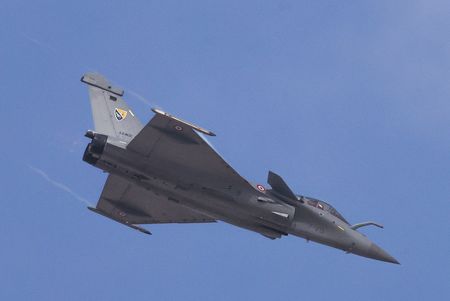(Reuters) -New Zealand said the Chinese navy conducted a live-fire exercise in international waters near the Pacific nation on Saturday, a day after it held a similar drill between Australia and New Zealand that forced airlines to divert flights.
“Reporting from the New Zealand Defence Force that the Chinese naval Task Group has advised of a second window for live firing activity, on Saturday afternoon,” a spokesperson for Defence Minister Judith Collins said in a statement.
Personnel on New Zealand Navy frigate Te Kaha observed live rounds fired from a Chinese vessel’s main gun, the statement said, adding that the task group had “advised via radio channels of its intent to conduct live firing”.
Prime Minister Christopher Luxon said earlier on Saturday that it was unclear where the Chinese naval vessels were headed in international waters and for what purpose.
“What we are doing is monitoring and shadowing and tracking the fleet,” he said in Christchurch, adding that China was acting in accordance with international law.
Saturday’s live-fire drill took place in the Tasman Sea, broadcaster Radio New Zealand reported.
On Friday, airlines including Qantas, Emirates and Air New Zealand had to modify flight paths between Australia and New Zealand after China broadcast a message that its navy would hold live-fire exercises in international waters off Australia’s New South Wales state coast.
Australia Defence Minister Richard Marles said on Saturday Beijing had failed to give satisfactory reasons for what he called inadequate notice of Friday’s live-fire drill. The late notice was “disconcerting” for commercial aviation, he said.
“When we do an activity of this kind, we would typically give 12 to 24 hours notice,” Marles told broadcaster Nine Entertainment, according to a transcript.
The warning by the Chinese vessels was at “very short notice”, Marles said, without saying how many hours were given.
Australia’s defence force said there was no imminent risk of danger to Australian or New Zealand assets, the government said on Friday.
“China did comply with international law and that’s important to not suggest that that wasn’t the case,” Prime Minister Anthony Albanese said on Saturday in remarks televised by the Australian Broadcasting Corporation.
Chinese foreign ministry spokesman Guo Jiakun said on Friday the naval exercises “upheld safety standards and professional operations throughout in accordance with relevant international laws and international practices”.
Australian Foreign Minister Penny Wong met her Chinese counterpart Wang Yi on Friday on the sidelines of a Group of 20 meeting in South Africa, saying they would discuss “safe and professional military conduct”.
Wang told the Australian foreign minister that bilateral ties had stabilised but he hoped Australia would continue to “properly handle any differences and disagreements,” according to a statement from the Chinese foreign ministry on Saturday.
There was no mention of China’s military conduct in the statement.
Friday’s exercise took place after a People’s Liberation Army Navy frigate, cruiser and replenishment vessel entered Australia’s maritime approaches last week, and travelled down Australia’s east coast this week, monitored by the navies and air forces of Australia and New Zealand.
Australia this month complained about “unsafe and unprofessional” actions by a Chinese fighter jet towards an Australian maritime patrol in the South China Sea. Beijing accused the Australian aircraft of “deliberately intruding” into its airspace.
China rejects a 2016 ruling by the Permanent Court of Arbitration in the Hague that its claim to almost all of the South China Sea, parts of which are also claimed by several Southeast Asia nations, was not supported by international law.
(Reporting by Sam McKeith in Sydney; Additional reporting by Ryan Woo in Beijing; Editing by William Mallard and Tom Hogue)










